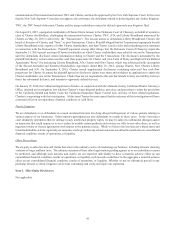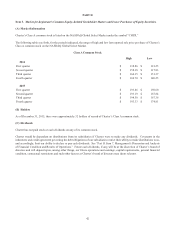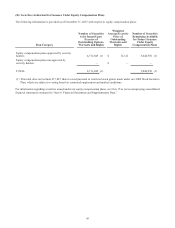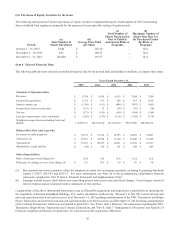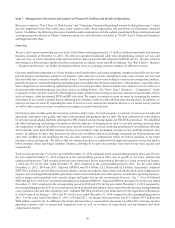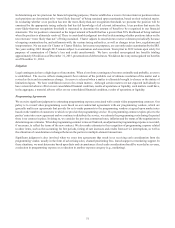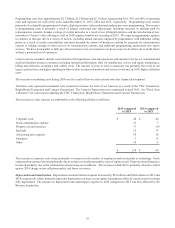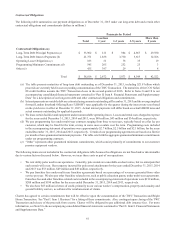Charter 2015 Annual Report Download - page 66
Download and view the complete annual report
Please find page 66 of the 2015 Charter annual report below. You can navigate through the pages in the report by either clicking on the pages listed below, or by using the keyword search tool below to find specific information within the annual report.
51
In determining our tax provision for financial reporting purposes, Charter establishes a reserve for uncertain tax positions unless
such positions are determined to be “more likely than not” of being sustained upon examination, based on their technical merits.
In evaluating whether a tax position has met the more-likely-than-not recognition threshold, we presume the position will be
examined by the appropriate taxing authority that has full knowledge of all relevant information. A tax position that meets the
more-likely-than-not recognition threshold is measured to determine the amount of benefit to be recognized in our financial
statements. The tax position is measured as the largest amount of benefit that has a greater than 50% likelihood of being realized
when the position is ultimately resolved. There is considerable judgment involved in determining whether positions taken on the
tax return are “more likely than not” of being sustained. Charter adjusts its uncertain tax reserve estimates periodically because
of ongoing examinations by, and settlements with, the various taxing authorities, as well as changes in tax laws, regulations and
interpretations. No tax years for Charter or Charter Holdco, for income tax purposes, are currently under examination by the IRS.
Tax years ending 2012 through 2015 remain subject to examination and assessment. Years prior to 2012 remain open solely for
purposes of examination of Charter’s loss and credit carryforwards. We have recorded unrecognized tax benefits totaling
approximately $5 million as of December 31, 2015, presented net of deferred taxes. We did not have any unrecognized tax benefits
as of December 31, 2014.
Litigation
Legal contingencies have a high degree of uncertainty. When a loss from a contingency becomes estimable and probable, a reserve
is established. The reserve reflects management's best estimate of the probable cost of ultimate resolution of the matter and is
revised as facts and circumstances change. A reserve is released when a matter is ultimately brought to closure or the statute of
limitations lapses. We have established reserves for certain matters. Although certain matters are not expected individually to
have a material adverse effect on our consolidated financial condition, results of operations or liquidity, such matters could have,
in the aggregate, a material adverse effect on our consolidated financial condition, results of operations or liquidity.
Programming Agreements
We exercise significant judgment in estimating programming expense associated with certain video programming contracts. Our
policy is to record video programming costs based on our contractual agreements with our programming vendors, which are
generally multi-year agreements that provide for us to make payments to the programming vendors at agreed upon market rates
based on the number of customers to which we provide the programming service. If a programming contract expires prior to the
parties' entry into a new agreement and we continue to distribute the service, we estimate the programming costs during the period
there is no contract in place. In doing so, we consider the previous contractual rates, inflation and the status of the negotiations in
determining our estimates. When the programming contract terms are finalized, an adjustment to programming expense is recorded,
if necessary, to reflect the terms of the new contract. We also make estimates in the recognition of programming expense related
to other items, such as the accounting for free periods, timing of rate increases and credits from service interruptions, as well as
the allocation of consideration exchanged between the parties in multiple-element transactions.
Significant judgment is also involved when we enter into agreements that result in us receiving cash consideration from the
programming vendor, usually in the form of advertising sales, channel positioning fees, launch support or marketing support. In
these situations, we must determine based upon facts and circumstances if such cash consideration should be recorded as revenue,
a reduction in programming expense or a reduction in another expense category (e.g., marketing).


